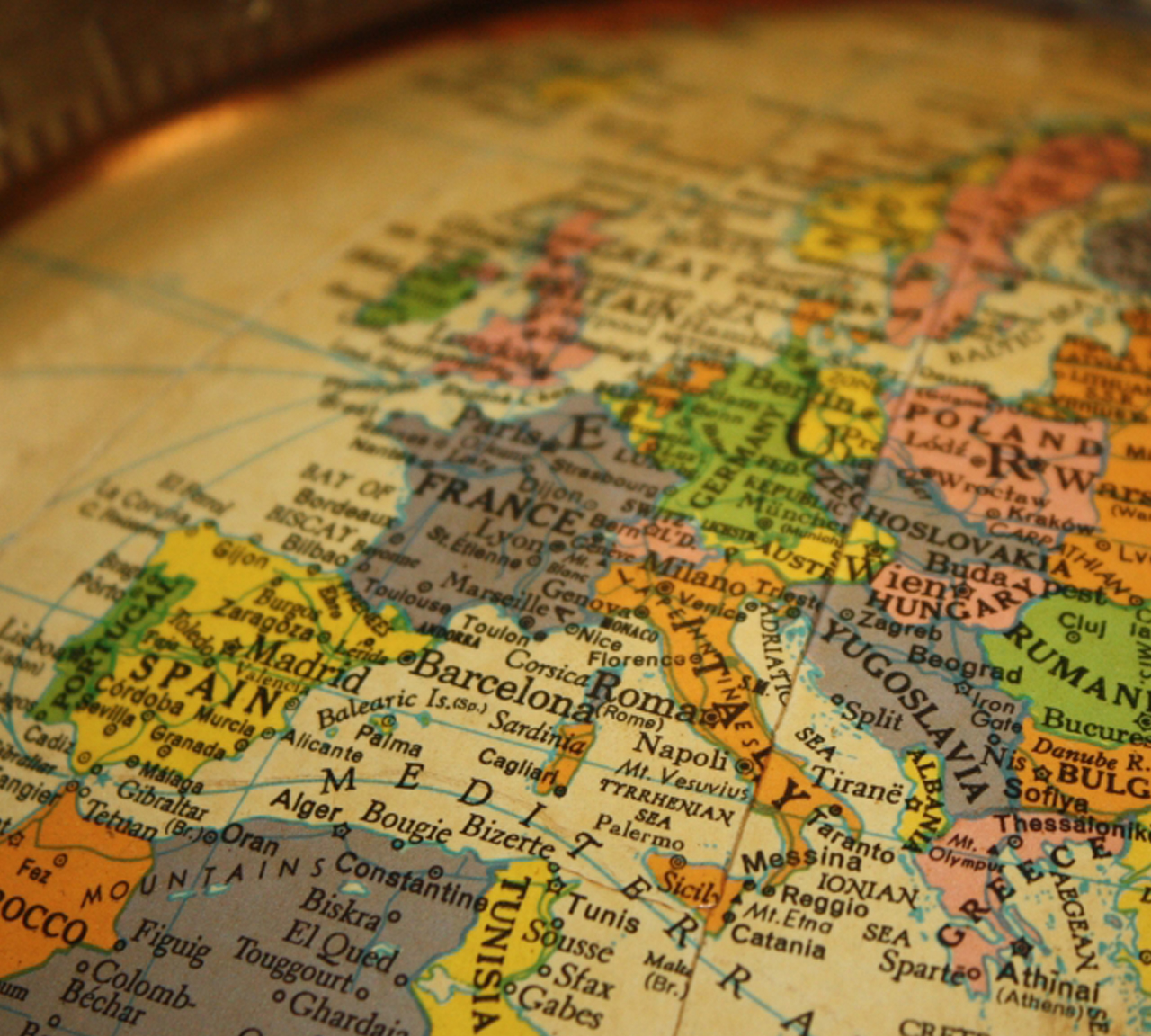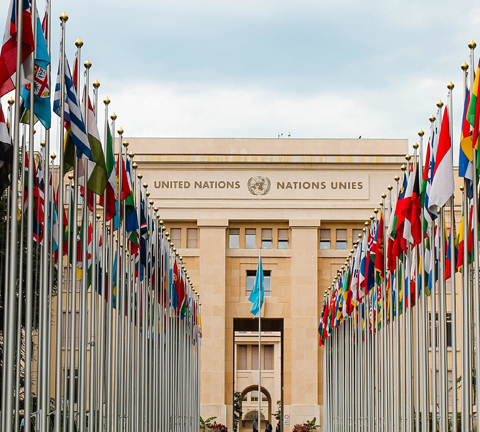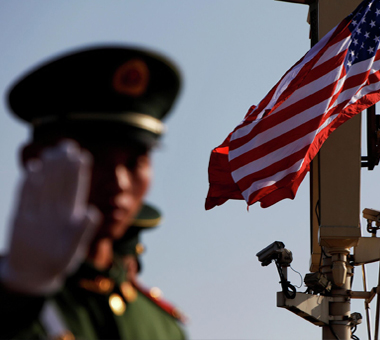Geographical location of a state plays an important role in determining its foreign policy. Throughout history, natural terrain has been used as a military tool, with rugged mountains being a major defensive fortress behind which human organizations have been protected from invasion attempts, while seas have been a natural buffer that could only be overcome with the formation of the Navy and the accompanying development of strike force that allows for targeting coasts and establishing a safe landing zone.
Because of this correlation between geography and politics, philosophers and theorists of various eras sought to frame the theory of such relationship; thus, there were many theories that explored the strengths of geographical states in terms of natural resources, the nature of terrain, climate and population and their distribution over the state.
These successive explanations contributed to the emergence of geopolitics, which some critics have argued that it has turned into an "excuse" for expansionist powers through which they justify the occupation of surrounding territories. Its early theorist — such as Friedrich Ratzel (1844−1904) and Rudolf Kjellén (1864–1922) — supposed that it is an imperative for a state which wants to consolidate its territorial to conduct expansionary military operations to secure resources for population needs, considering that the state is an organic organism that must be "fed" by land in order to maintain its survival.
Based on geopolitical realities and perceptions, geostrategy has emerged as a subfield of geopolitics. Unlike geopolitics, which is concerned with studying the foreign policy of the state in the light of its geography, geostrategy focuses on identifying a territory which, if dominated, makes it easier for the dominating state to build on and move towards global influence. Regardless of considerations of global hegemony, each state has its own geopolitical calculations, but only global powers have direct geostrategic calculations.
The cold war is perhaps one of the most prominent manifestations of the geostrategic conflict between the two poles of the world. The two sides raced to entrench themselves in overlapping geographical blocs - Eastern Soviet and Western capitalism - which turned Europe into the most prominent arena of this conflict still, up to the present, visible even after the influence of the totalitarian ideological dimension in the nature of the interactions between Russia and NATO had receded.
The geostrategic dimension of international relations is also evident when speaking about the Far East, where there are emerging powers, such as China and India, and important waterways in addition to a large population capable of contributing to the production process and purchasing, all of which make the region a hotbed of international tension.
Analysts who expect more American orientation from the Middle East the toward Far East, rely on geostrategic proposition, arguing that the greater the control of this region, the greater the international influence, thus "borrowing" 20th-century political thought to anticipate the paths of international politics in the 21st century. It may be misleading to be guided by theories that have interpreted past facts to anticipate the future; for as it is said, “all theories are a product of their time.” This means that geostrategic thinking in the 21st century should not be confined to the traditional thought of examining the expansion of hard power through vital anchors that allow for the deployment and logistical support to the widest possible extent on the planet.
For example, the economic aspect cannot be overlooked when examining influence in the international system. As various states seek to improve the living reality of their people, they tend to prefer to deal with the major powers capable of supporting their economy. On the other hand, major global powers seek to fortify their economic gains around the world, by carrots or sticks, because any decline in their economic standing would result in a decline in their international standing.
Because of the transboundary economic overlap through international conventions and organizations that include most countries of the world — such as the World Trade Organization — the geographical factor is no longer an obstacle to economic communication, leading to a decline in the role of geography — and therefore geopolitics — in geostrategic calculations in favor of the economy.
But this decline does not mean that the importance of geography has diminished, since economy has returned and is being framed according to specific geographical considerations, such as regional frameworks for increasing trade between neighboring countries. The high frequency of shipping also reaffirmed the importance of geographical location, as it is carried out through vital straits; such as the Malacca Strait between the South China Sea and the Indian Ocean, the Suez Canal between the Indian Ocean and the Mediterranean Sea, and the Strait of Gibraltar between the Mediterranean and the Atlantic Ocean. Part of the tension between the major powers is due to the rivalry over these straits and waterways, through which international conventions have ensured the flow of goods and individuals, but the drive for hegemony and fear of exclusion remains a good reason for the forces involved in the geographical Straits war.
Beijing's Belt and Road Initiative is perhaps one of the most prominent examples of the interdependence between geography and economy, and it concerns Western countries because they see it as a means for China’s expansion in international structure through soft power, and that may give China greater influence if it intends to “harden” the Silk Road through security agreements with some countries within the initiative's road or the establishment of permanent military bases to support ports under the initiative.
Based on these perceptions, at its last summit in June 2021, the G7 endorsed a global plan for a "democratic" silk road that would crowd its Chinese counterpart and seek to attract countries that admired China's foreign policy logic based on economic development, for one of the gaps in US policy to deal with China's rise is its failure to offer alternatives, particularly on economic and development issues.
Theories of geoeconomics examine the relationship between geography and economy outlined above, as well the scope of capital concentration and regional and international investment flows. The economic movement has not eliminated the importance of the geopolitical reality of the state, even if geostrategic considerations are more influenced by geo-economy than the geopolitical of the 20th century.
Technology is also one of the factors that has undermined the impact of geographical barriers and boundaries on international relations. The flow of ideas and information is no longer dependent on geographical location, and the concept of sovereignty can no longer be applied in the traditional perspective. The state's ability to control the course of events within its territory has been influenced by the media revolution, which is reflected in its ability to influence the balance of international influence.
Cyber rivalry between superpowers takes on many dimensions, such as economy, espionage, penetration of the home front and military technology. Cyber power may be used hybridly to launch attacks on vital facilities beyond the geographical constraints on which classical geostrategic perceptions were built.
Outer space also plays a crucial role in the balance of international powers, turning into a fifth front in which aspiring states compete for military superiority, adding to the previous four dimensions (land, sea, air and cyber) a new challenge that does not take into account any geographical constraints.
In addition to previous areas (economy, cyberspace and outer space), culture plays an important role in determining the balance of power. This factor has largely been overlooked in the traditional geostrategic logic established in the late 19th and early 20th centuries, at which time culture was not a specific factor in local and regional policies.
An example of the inadequacy of traditional geostrategic logic in maintaining the state and its status is that the Soviet Union collapsed for an inadequacy in its economic and cultural structure, as Moscow was unable to spend on its geostrategic expansion, nor could it develop a coherent trans-national and transcultural communist identity. It is true that the Communist Union succeeded geostrategicly but collapsed by internal interactions, and to a lesser extent by external interactions such as wars, military spending and the accompanying depletion of the State treasury.
The bottom line
In light of the data reviewed in this analytical reading, the traditional geostrategic thinking cannot be relied upon when addressing the issue of international influence. Globalization, horizontally and vertically, has expanded interactions and complicated the process of limiting the specific framework of the State's foreign policy, and the latter is no longer the only actor in the international system, as there have emerged new actors - such as multinational companies - and their influence may exceed that of what was once considered the only player.
The essence of geostrategy also focuses on the main territory research, which is key to international influence. With the ability to overcome geographical barriers in the 21st century, the spatial framework is no longer an obstacle to penetration and communication, which means that control tools must raise the importance of certain areas, such as cyber and space. This shift in control tools is somewhat similar to that of after WW1, when the Air Force became the decisive field force.
As the internal burdens of the State increase due to the growing population and the consequences of the Covid-19 pandemic, the major States are no longer able to increase the frequency of their international engagement because of the high cost involved, both physically and administratively, which means that what is considered a "gain" in the geostrategic perspective of the twentieth century has become a burden in this century, requiring a rereading of prudent means of achieving geostrategic objectives and, more importantly, redefining the geostrategic goal without reducing it to "control and influence".
Keep in touch
In-depth analyses delivered weekly.

Related Analyses:












